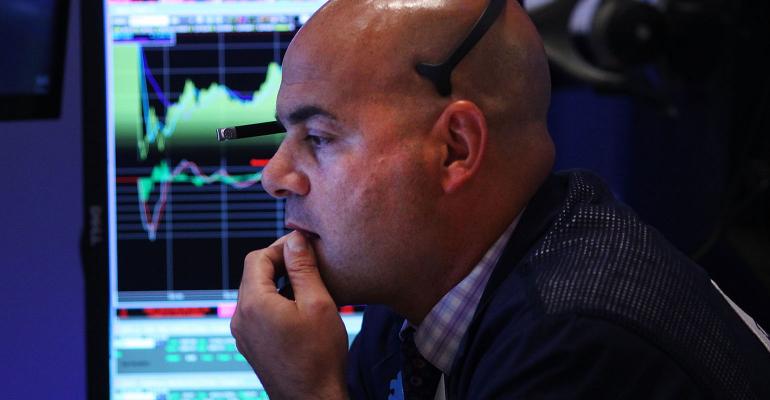By Carolina Wilson
(Bloomberg) --Looking to capitalize on what’s shaping up to be a strong earnings season? You may want to avoid some of the most popular vehicles in the market: large sector exchange-traded funds.
ETFs tracking all sectors have gathered a record $18.1 billion this year, with $1.4 billion coming in the past seven days alone, according to data compiled by Bloomberg. Last week, State Street Corp.’s Financial Select Sector SPDR Fund became the second-most actively traded ETF in the U.S. as Wall Street banks reported encouraging first-quarter results. The $23 billion fund, which goes by the symbol XLF, has an average daily volume of 80 million shares a day.
The problem is passive ETFs that track indexes may not be ideal for the company-specific nature of earnings season, according to Andy Wester, a money manager at Proficio Capital Partners LLC.
“It would be hard to marry the idiosyncratic risk of individual companies in earnings season with a diversified basket like an ETF,” Wester said.
While the diversification of funds like XLF is often seen as a benefit, performance between firms in some sectors can vary so widely that winning bets are essentially canceled out by losing ones, according to Bryan Novak, senior managing director and manager for Astor Investment Management LLC. Take retailing, for example.
“Retail has seen a lot of issues, but even in a better consumer environment, that tide hasn’t lifted all ships,” he said.
Divergence Within Sectors
Performance between industries can also differ. State Street’s Technology Select Sector SPDR Fund, symbol XLK, holds 74 companies in semiconductors, telecommunications and software. Internet companies and semiconductor producers are expected to lead first quarter earnings this year, but communications and software firms are expected to report weaker results.
“There are going to be certain industries within sectors that do relatively well,” said Todd Rosenbluth, director of ETF and mutual funds at CFRA. In these situations, the best strategy is “going narrow and choosing ETFs that concentrate on those industries.”
The biggest sector ETFs, like XLF and the $15.8 billion Health Care Select Sector SPDR Fund, symbol XLV, also weight their holdings by market capitalization, which skews their portfolios toward the biggest companies. But those aren’t necessarily the companies that will beat expectations and see their share price pop, said Ben Johnson, director of global ETF and passive strategy research at Morningstar Inc.
Beats Stock Picking
“You could imagine a scenario where someone would say the smaller names in this sector might benefit disproportionately from positive news,” he said. “So do I go further down the cap spectrum by either equal-weighting or looking at a mid- or a small-cap ETF.”
For instance, within the technology sector, the SPDR S&P Semiconductor ETF, or XSD, tracks companies with a median market capitalization of $4.7 billion, compared with XLK’s median size of $210 billion, according to data compiled by Bloomberg. XSD also equal weights the shares so its holdings don’t skew one way or another.
Still, for all the potential hazards of sector ETFs, the funds probably are a better play during earnings season than trying to pick individual stocks, Novak said.
“Buy five or 10 stocks,” he said, “and if you’re wrong and two of them end up having bad earnings, that’s not a good deal.”
To contact the reporter on this story: Carolina Wilson in New York City at [email protected] To contact the editors responsible for this story: Jeremy Herron at [email protected] ;Yakob Peterseil at [email protected] Eric J. Weiner, Randall Jensen





